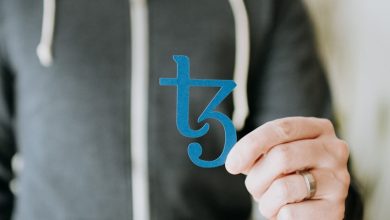Using Moving Averages for Entry and Exit Points

- Understanding Moving Averages in Trading
- The Benefits of Using Moving Averages for Entry and Exit Points
- How to Choose the Right Moving Average for Your Trading Strategy
- Common Mistakes to Avoid When Using Moving Averages in Trading
- Strategies for Combining Moving Averages with Other Technical Indicators
- Real-Life Examples of Successful Trades Using Moving Averages
Understanding Moving Averages in Trading
Moving averages are an essential tool for traders to analyze trends in the market. By calculating the average price of an asset over a specified period, moving averages help smooth out price fluctuations, making it easier to identify the direction of the trend. There are different types of moving averages, such as simple moving averages (SMA) and exponential moving averages (EMA), each with its strengths and weaknesses.
Simple moving averages give equal weight to each price point in the calculation, while exponential moving averages give more weight to recent prices. Traders often use a combination of both types to get a more comprehensive view of the trend. When the price of an asset is above its moving average, it is considered bullish, indicating a potential uptrend. Conversely, when the price is below the moving average, it is considered bearish, indicating a potential downtrend.
Traders use moving averages to determine entry and exit points in the market. When the price crosses above a moving average, it is seen as a buy signal, suggesting that the asset’s price may continue to rise. Conversely, when the price crosses below a moving average, it is seen as a sell signal, indicating that the asset’s price may continue to fall. By using moving averages in conjunction with other technical analysis tools, traders can make more informed decisions about when to enter or exit a trade.
The Benefits of Using Moving Averages for Entry and Exit Points
Using moving averages for entry and exit points in trading can be highly beneficial for traders of all levels. Moving averages help smooth out price data to identify trends over a specific period of time, making it easier to spot potential entry and exit points in the market. By analyzing the relationship between short-term and long-term moving averages, traders can gain valuable insights into market direction and make more informed trading decisions.
One of the key benefits of using moving averages is that they can help traders filter out the noise in the market and focus on the overall trend. This can be particularly useful in volatile markets where price fluctuations can be unpredictable. By using moving averages to identify trends, traders can avoid getting caught up in short-term price movements and stay focused on the bigger picture.
Another advantage of using moving averages for entry and exit points is that they can help traders set stop-loss and take-profit levels more effectively. By incorporating moving averages into their trading strategy, traders can establish clear risk management parameters based on the underlying trend. This can help minimize losses and maximize profits, leading to a more consistent and disciplined approach to trading.
In conclusion, incorporating moving averages into your trading strategy can provide a valuable framework for identifying entry and exit points in the market. By leveraging the power of moving averages to analyze trends and set risk management parameters, traders can improve their overall trading performance and achieve more consistent results over time.
How to Choose the Right Moving Average for Your Trading Strategy
When choosing a moving average for your trading strategy, it is essential to consider the timeframe you are trading on and the level of sensitivity you desire. There are different types of moving averages, such as simple moving averages (SMA), exponential moving averages (EMA), and weighted moving averages (WMA). Each type has its strengths and weaknesses, so it is crucial to choose the one that best suits your trading style.
If you are looking for a moving average that reacts quickly to price changes, you may want to consider using an exponential moving average. EMAs give more weight to recent prices, making them more responsive to current market conditions. On the other hand, if you prefer a smoother moving average that filters out noise, a simple moving average may be more suitable for your trading strategy.
Another factor to consider when choosing a moving average is the timeframe you are trading on. Short-term traders may benefit from using shorter moving averages, such as a 10-day or 20-day moving average, to capture quick price movements. In contrast, long-term traders may find longer moving averages, like a 50-day or 200-day moving average, more useful for identifying the overall trend.
Ultimately, the right moving average for your trading strategy will depend on your individual preferences and goals as a trader. It may be helpful to experiment with different types of moving averages and timeframes to see which combination works best for you. Remember that there is no one-size-fits-all solution, so it is essential to find the moving average that aligns with your trading style and risk tolerance.
Common Mistakes to Avoid When Using Moving Averages in Trading
When using moving averages in trading, it is important to avoid common mistakes that can negatively impact your decision-making process. By being aware of these pitfalls, you can improve the accuracy of your entry and exit points.
- One common mistake to avoid is relying too heavily on a single moving average. Using multiple moving averages can provide a more comprehensive view of the trend and help confirm signals.
- Avoid using moving averages in isolation without considering other technical indicators or market conditions. It is essential to use moving averages as part of a broader trading strategy.
- Do not use moving averages with a short time frame in isolation. Short-term moving averages can be more volatile and lead to false signals. Consider using longer-term moving averages for a more reliable analysis.
- Avoid chasing the price by entering or exiting trades based solely on crossovers of moving averages. It is important to wait for confirmation and consider other factors before making a decision.
- Avoid using moving averages in choppy or sideways markets where they may produce conflicting signals. It is best to use moving averages in trending markets for more accurate results.
By avoiding these common mistakes when using moving averages in trading, you can enhance your decision-making process and improve the overall effectiveness of your trading strategy. Remember to use moving averages as part of a comprehensive analysis and consider other factors to confirm signals.
Strategies for Combining Moving Averages with Other Technical Indicators
One effective strategy for utilizing moving averages in trading is to combine them with other technical indicators. By incorporating additional indicators into your analysis, you can enhance the accuracy of your entry and exit points. Here are some strategies for combining moving averages with other technical indicators:
- **Relative Strength Index (RSI)**: One common approach is to use the RSI in conjunction with moving averages. When the RSI indicates an oversold condition and the price is above the moving average, it may signal a potential buying opportunity. Conversely, if the RSI is in overbought territory and the price is below the moving average, it could be a signal to sell.
- **MACD (Moving Average Convergence Divergence)**: The MACD is another popular indicator that can be used alongside moving averages. Traders often look for crossovers between the MACD line and the signal line, as well as the MACD histogram. These crossovers can provide confirmation of potential trend reversals.
- **Bollinger Bands**: Combining Bollinger Bands with moving averages can help traders identify potential breakouts. When the price moves outside of the Bollinger Bands and crosses above or below a moving average, it may indicate a strong trend in that direction.
- **Stochastic Oscillator**: The Stochastic Oscillator is another oscillator that can be used in conjunction with moving averages. Traders often look for divergences between the Stochastic Oscillator and price, as well as overbought or oversold conditions, to confirm potential entry and exit points.
By incorporating these additional technical indicators with moving averages, traders can gain a more comprehensive view of market conditions and make more informed trading decisions. Experimenting with different combinations of indicators can help you find a strategy that works best for your trading style and risk tolerance.
Real-Life Examples of Successful Trades Using Moving Averages
Here are some real-life examples of successful trades using moving averages:
- A trader noticed a bullish crossover where the short-term moving average crossed above the long-term moving average. This signaled a potential uptrend in the stock price. The trader entered a long position and was able to ride the trend for a significant profit before the moving averages crossed back over.
- Another trader used a moving average crossover as an exit signal. When the short-term moving average crossed below the long-term moving average, it indicated a potential downtrend. The trader exited their long position to avoid further losses and was able to preserve their capital.
- One more example is a trader who used multiple moving averages to confirm a trend. By looking at the relationship between different moving averages, they were able to filter out false signals and only enter trades when all moving averages aligned in the same direction. This helped them avoid whipsaws and stay in profitable trades longer.



